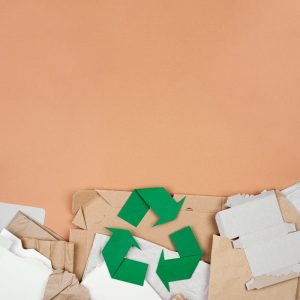So far in this series on the environmental impact of packaging, we’ve looked at the scope of the industry, as well as some of the responses from companies, such as retailers and manufacturers, as well as governments to the problem. We’ve also seen how the packaging industry is holding itself accountable. Now it’s time to look at product innovation in this area.
In this article, we’re going to dig into the details of how the switch to sustainable packaging is actually going to work.
What Types of Sustainable Materials are Being Used for Packaging?
If brands and converters are seeking an attainable approach to sustainable packaging, they need a diverse range of substrate solutions. That’s because there are so many applications, such as high-volume commercial or digital printing, and substrates with premium textures, recycled materials, and different thicknesses and structures.
One recent example of a sustainable material being used for packaging comes from the food industry. In early November 2021, the Natrellis line of food packaging made by Sonoco, one of the largest global diversified packaging companies, began to use an upcycled sugarcane fiber and other U.S. grown plant fibers for its dual-ovenable package. Its highly-engineered surface will deliver outstanding performance as well as maintain the package’s strength and eliminate wicking through the package to outside surfaces.
Digitization of Sustainable Packaging
It’s not always just about the environment, though. Packaging is affected by ecological concerns, of course, but other world events, from supply chains to logistics, will have an effect on how companies market, sell, and transport their products.
Indeed, the global pandemic has also influenced the growth of “smart packaging,” in which brands are using their packaging to better communicate with customers and strengthen the supply chain. By using digital means, such as QR codes, the packaging can communicate with consumers as well as the entire supply chain to ensure security and efficiency.
For example, PepsiCo is using the SmartLabel initiative in the U.S. to offer more information digitally than can be printed on a normal label, such as regulatory information. This type of smart packaging provides true connectivity as well as a greener, safer, and easily-updatable information in multi-language versions. As COVID continues to rage on (as of this writing), this kind of innovation is both welcome and necessary.
What About Design-Focused and Luxury Packaging?
If you’ve read our blog at all, you know that we here at United Label take design seriously. In fact, we have an entire section of our website dedicated to free design resources for our customers (and anyone else!) to use and enhance their brands. So with all this talk of green packaging, we are definitely concerned about the aesthetic impact it has to products and brands.
But the truth is, environmentally-friendly packaging does not mean less enticing or poorly constructed. Many brands and their creative designers are turning to recycled materials to produce beautiful new packaging. It’s an opportunity to marry innovative design with environmental responsibility.
Take, for example, the sustainable luxury of the new Chivas 12, one of the world’s best-selling Scotch whiskies. In early 2022, spirits brand Chivas Brothers will unveil its new redesigned bottle and box to its fans. When the firm decided on the project, sustainability was at its heart. The outer packaging is now made from fully recyclable materials.
At the same time, luxury packaging company Delta Global introduced its FutureBox, an innovative new packaging design to protect the Earth’s future. Designed with the highest sustainability standards in mind, the new packaging design uses no tape and has easy assembly functionality. It is fully recyclable using FSC (Forest Stewardship Council) materials and requires no magnets for secure closure.
Other Considerations For Going Green With Product Innovation
As you can tell, there’s a lot to talk about when it comes to environmentally-friendly packaging. In our next (and final) article in this series, we’re going to look at some of the drawbacks of going green, and how companies can make this transition work—for them, and for the planet.
